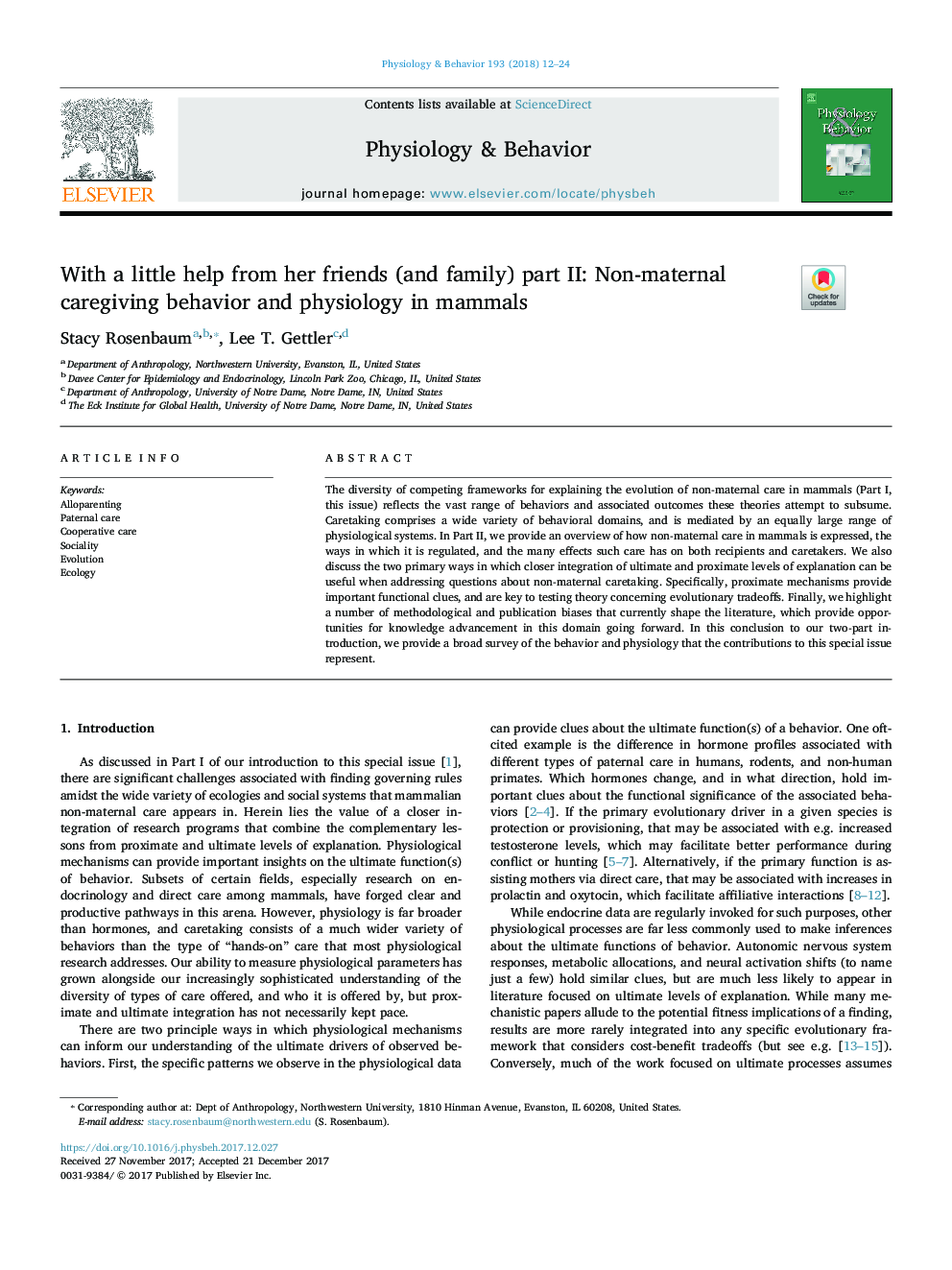| Article ID | Journal | Published Year | Pages | File Type |
|---|---|---|---|---|
| 8650411 | Physiology & Behavior | 2018 | 13 Pages |
Abstract
The diversity of competing frameworks for explaining the evolution of non-maternal care in mammals (Part I, this issue) reflects the vast range of behaviors and associated outcomes these theories attempt to subsume. Caretaking comprises a wide variety of behavioral domains, and is mediated by an equally large range of physiological systems. In Part II, we provide an overview of how non-maternal care in mammals is expressed, the ways in which it is regulated, and the many effects such care has on both recipients and caretakers. We also discuss the two primary ways in which closer integration of ultimate and proximate levels of explanation can be useful when addressing questions about non-maternal caretaking. Specifically, proximate mechanisms provide important functional clues, and are key to testing theory concerning evolutionary tradeoffs. Finally, we highlight a number of methodological and publication biases that currently shape the literature, which provide opportunities for knowledge advancement in this domain going forward. In this conclusion to our two-part introduction, we provide a broad survey of the behavior and physiology that the contributions to this special issue represent.
Related Topics
Life Sciences
Biochemistry, Genetics and Molecular Biology
Physiology
Authors
Stacy Rosenbaum, Lee T. Gettler,
